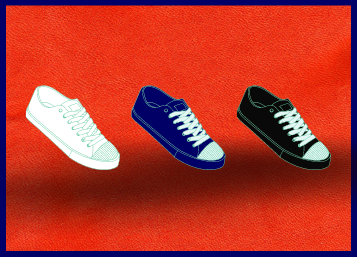How many shoe styles do you need to launch a shoe brand?
Are you worried that one or two styles aren’t enough to launch your shoe brand with? Concerned that starting with several styles will cost you too much to purchase the minimum order quantities (MOQs) your manufacturer requires? In this post, I’m going to do some myth-busting about how many styles you should launch your brand with.
First of all, let’s make sure you understand the terminology shoe industry professionals use.
What’s the difference between a style and a SKU?
Style
A style is the design of a shoe including the upper (top part), sole and heel. If you change any of these elements e.g. add a strap or change the cut of the upper, it becomes a different style. If you put the same style on a different heel or sole, it also becomes a different style.
Why do these elements matter? Because your manufacturer is likely to calculate their required MOQs on a style. So if you have two shoe styles because you changed a detail, you are doubling the MOQs you need to purchase. It pays to keep things simple!
SKU
A SKU (Stock Keeping Unit) is essentially a colour of a style. So if you have one style in 3 colours, you have 3 SKUs. If you have 2 styles each in 3 colours, you have 6 SKUs. A SKU is also known as an option…usually by retail buyers.
I have used the word “colours” but in the shoe business, you would say “colourways”. A colourway can mean a single colour or a combination of colours e.g. pink upper with black sole, or multi-coloured upper.
How to decide how many shoes to launch with?
Start with your customer. What is the problem you are looking to solve for them? If it’s that they don’t currently have enough choice in their shoe size/fit/style, you’re going to want to launch with at least 3-4 styles.
If your customer’s problem is that they can’t find the one shoe style which they need, consider “going deep” in one or two styles.
What does “going deep” mean?
“Going deep” means offering just a few styles in numerous colourways/options/SKUs.
By contrast, “going wide” or having width or breadth to your range means offering numerous styles.
Shoe brand founders love sharing their own range building tips and experience with each other in my membership group The Shoe Community. To benefit from their advice, and watch masterclasses on topics such as “How many styles of shoe should you launch with?” simply submit your application.





Leave a Comment: